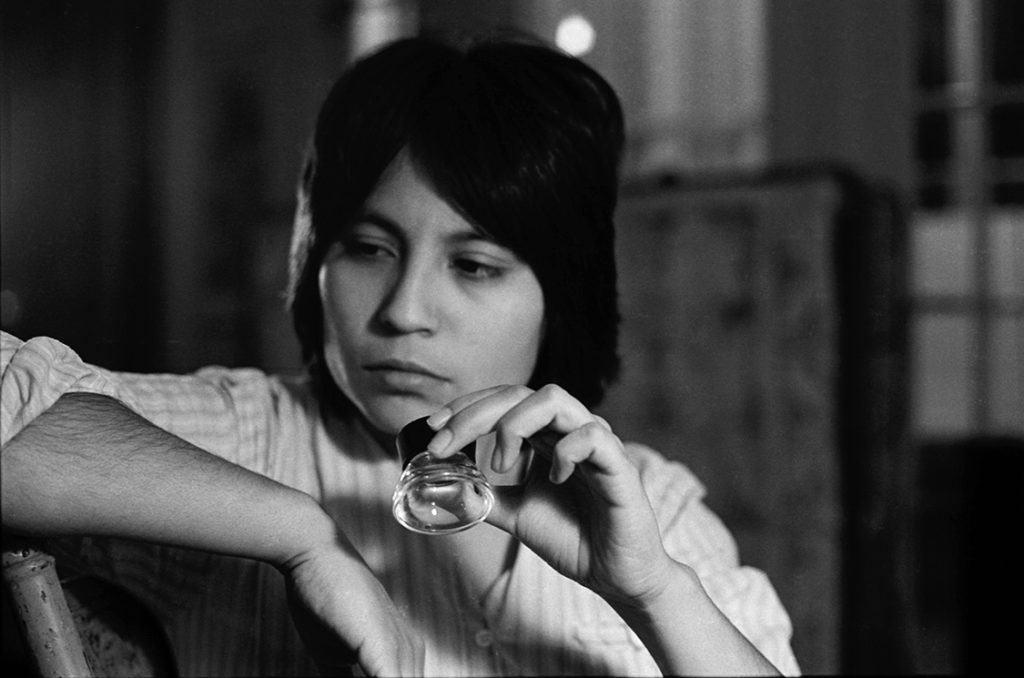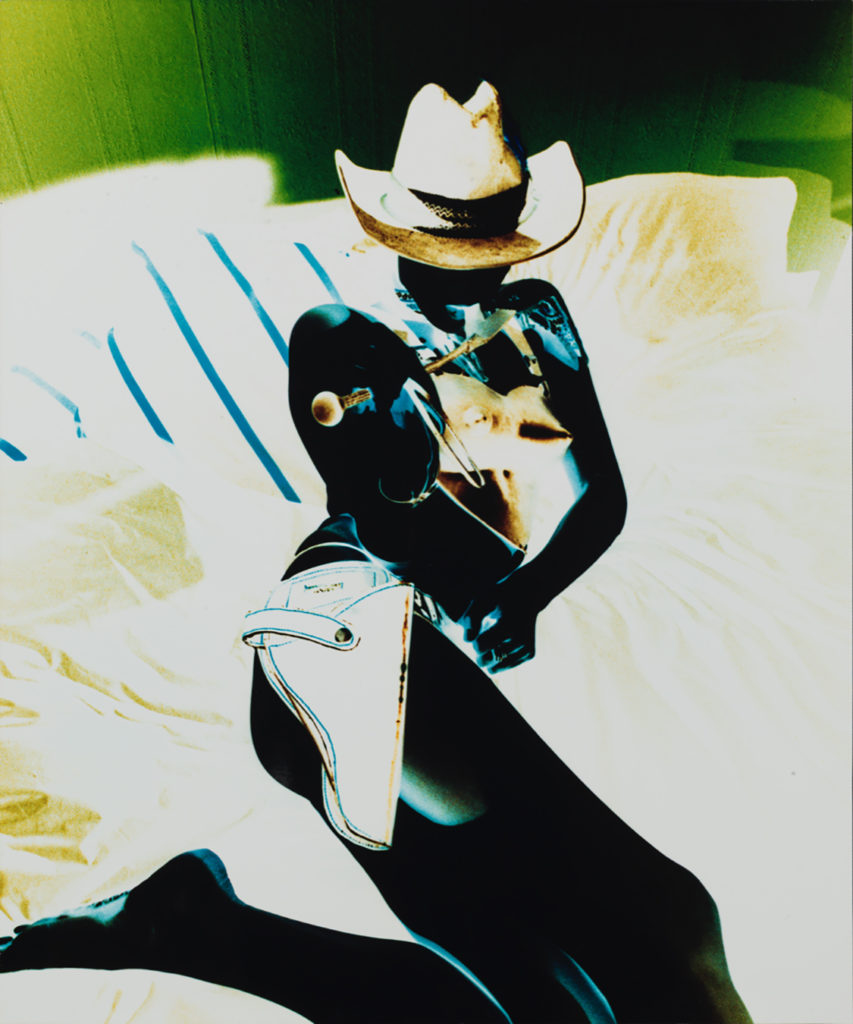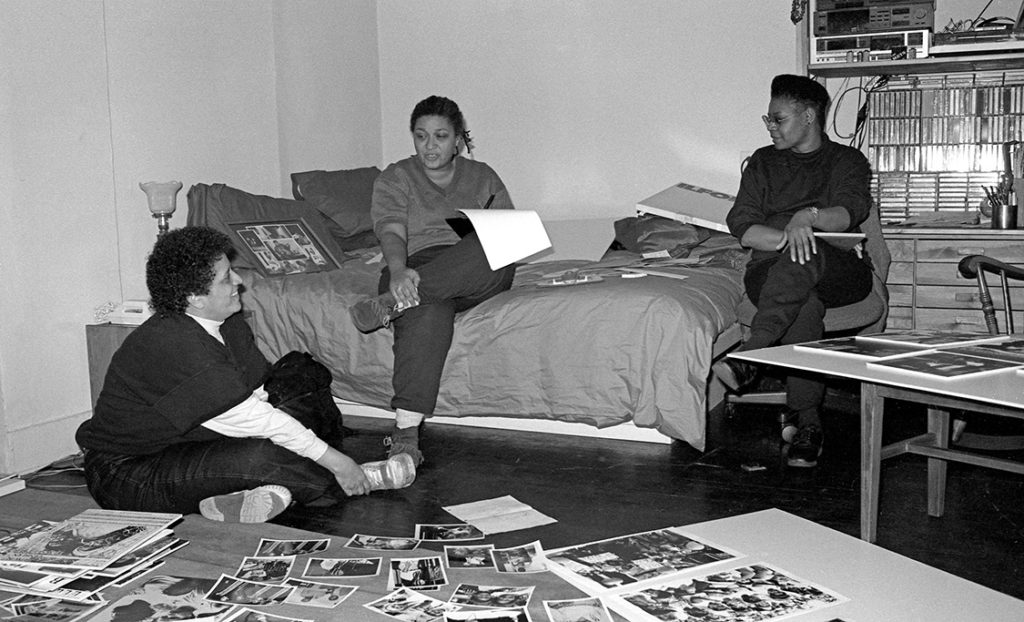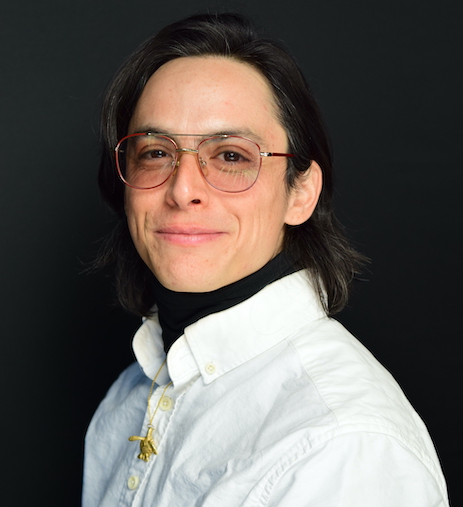Q&A with Guest Curator Ariel Goldberg
Posted on August 24, 2022
Ariel Goldberg is a writer, curator, and photographer based in New York City. Images on which to build, 1970s–1990s, curated by Goldberg, will run September 30, 2022–February 12, 2023 at the Contemporary Arts Center. Passport holders have early access to the member preview on Friday, September 30, 2022 from 6–8 pm.
Ariel Goldberg is a writer, curator, and photographer based in New York City. They are an experienced educator and have taught photography, writing, and contemporary art practices at numerous universities including Bard College, Parsons School of the Arts, The New School, and Rutgers University. As a 2020 recipient of the Andy Warhol Foundation Arts Writers Grant, their book-in-progress explores trans and queer image cultures of the late 20th century.
Images on which to build, 1970s–1990s, curated by Goldberg, will run September 30, 2022–February 12, 2023 at the Contemporary Arts Center. This exhibition reveals how influential LGBTQ+ image cultures ignited processes of learning, and presents over a dozen artists and archivist collectives who documented and circulated work from alternative schools, demonstrations, dance clubs, slideshows, correspondences, and community-based archive projects.
FotoFocus reached out to Goldberg to discuss the exhibition.
FotoFocus: Can you talk a bit about representation versus self-determination?
Ariel Goldberg: I consider it my life’s work to bring context back to images, a sort of caption poet. Especially for images that are detailing the glorious, the mundane, the insurgent chronicles of trans and queer life. We are in the riptides of conservative backlash to the interconnected movements against settler colonialism, white supremacy, ableism, patriarchy, and capitalism. Self-determination signals my alignment with those opposing assimilation into codified norms that support—instead of dismantle—society’s structural (and actual) forms of violence. I find self-determination sets the stakes a bit higher than representation, given the liberation movement work that is still deeply in progress. To use the word “self-determination” is another way of asking how histories and contemporary practices in photography that connect to the medium’s often obscured histories can fit into questions of fighting for the tenants of liberation work, such as free and accessible health care and education for all.
Frequently in my research, I read profound accounts of people’s lives being changed—of them being empowered to live in their gender or sexuality and thrive BECAUSE they saw just a single image of someone they could recognize. But how to create a photography exhibition that gets at that feeling for a viewership in a contemporary art museum? How do we enter the total unseen dimension of the experience of how we receive and share images?

Images of trans and queer life are circulating with wider and more frequent reach to various publics than ever before. Images on which to build, the exhibition that I have been making for over two years, attempts to bring forth the rich context around photographs, as messengers of the survival work of trans and queer teachers, elders, and ancestors I’ve been learning from. I notice context around photos of trans and queer life is often hollowed out and lost when images lean on iconicity. I’m more interested in poetic slow motion—to celebrate and revel in the information of images while also studying the material realities of those who appear in pictures, are behind the camera, or receive and care for saving these images inside community-based archives.
I am drawn to photographic histories that are linked to what is not quite visible (or accessed through vision). Wrestling with my love for, and the limitations of photography—especially the limits of representation in order to do actual work to make people’s lives better—led me to the theme of my exhibition: how do we learn through and with images? While the surface of an image might seem flat, there is a raucous and complex world around the image to study, to imagine, to represent as best I can. I relate to images as jumping off points to ask what’s happening, how’s it happening? How can I find the other people secretly obsessed with what went down at this conference or demonstration and learn about the cultural production of the people in the picture?
To open myself to the details at the outskirts of images is to fight the tides of erasure and loss of trans and queer life we live with daily. Today, a doctor who provides gender affirming care to a trans kid in Idaho will be charged with a felony. This is what I mean by violence—it is a decades-long effort by elected public servants who are trying to tell trans and queer people that we do not exist. It’s a pathetic attempt to take away people’s power to be [something] other than white, christian, cisgender, or heterosexual—to strip people of the right to find a book in the library that says, “hey, you exist and come live your life!”
I want to set the stakes a bit higher than existence; I want to share what I have found as image-based strategies that activists, artists, archivists have been using to fight this violence. So that’s my work, to animate the process of making and sharing pictures. Representation to me is a beginning of the story, and a critical step, but not the end. Trans studies and now mainstream trans politics is wrestling with debates around visibility and how it endangers the most vulnerable. If that is the case, then how do we shore up our more discrete modes of survival? And the answer was, in the 1970s–1990s, to make calendars with inspiring art, mass mail newsletters and information connecting people with resources, put on slideshow events, make low-fi exhibits, take and share pictures that describe the full complexity of resistance.

FF: How did you select the date range of the exhibition (1970s–90s) and what is significant about it?
AG: The date range references the years that the work in the exhibit was made and often circulated. I am a trained photographer who came to words and became a writer on photography when the color darkrooms were closing. I lived in black and white darkrooms in the late 1990s in high school. I was lucky to go to a high school that had arts as part of the curriculum—unlike most kids these days in public schools where this has been radically defunded. I then studied photography in college and fell in love with color photography in particular. The darkroom is where I felt most alive and comfortable before I had the language or history or self-awareness to come out as a lesbian or, queer, or trans which happened much later.
I felt kind of uninspired by digital photography as it began to replace analogue methods. I loved darkrooms so much I thought I might become a professional printer, as I assisted three artists in my early 20s and saw that whole world of fine-art printing. But I’m a terrible technician. I love to study, and I love thinking with people, so I went into education to make a living. In a lot of ways this exhibition is me processing how hard it is to keep going as an adjunct professor, a freelance educator within increasingly privatized colleges and universities. Twenty years in, I struggle with being “interdisciplinary” inside academia, which means I am not an expert enough, so I remain expendable as contingent labor.
My permutation of being a photographer began with asking “how can I work in this medium with very little money and how can I be useful to the history of photography—what work needs to be done?” I shifted to poetry, writing, and research. This period of the 1970s–1990s most accurately represents how images moved in form and material during my most formative years. I am a proud analogue head. I live for the grain on negatives and slides, of rifling through piles of RC contact sheets. I live for that moment when the lights go out in a room and the hum of a slide projector makes the dust caught in the projector’s light start to dance.
That is the emotional and personal answer to why 1970s–1990s, but I am also a pragmatist. Part of my work is to painstakingly travel to archives and seek out trans and queer histories. In this process, I notice over and over again that photographers and artists younger than I am don’t have access to the trans and queer history—and this history is in a precarious place. I’ve heard many archivists tell stories of materials found right before they were thrown away, or worse, intentionally destroyed. People of all generations without access to these materials sometimes assume such a vibrant trans and queer image culture doesn’t exist. At the same time, I hope to be lucky enough to be in conversation with brilliant people who made—and continue to make—the very image cultures that us younger generations benefit from. I am focused on securing their actual work; preservation, digitization, access, all of this takes resources. It’s time the institutions that purport to preserve and chronicle photo histories and the humanities broadly turn to what they once ignored. This is not always comfortable, but it’s better to be late to the party than not come at all!I chose the late 1970s because two influential slideshows in my exhibit began to tour in 1979, but many of the culture workers were referencing their near pasts and ancestors, so dates and time operate more fluidly than the date markers indicate. On the back burner is also my novel A Century, based on the romantic and creative relationship between photographer Berenice Abbott and art critic Elizabeth McCausland that takes place between 1935–1965, and Berenice appears twice inside Images on which to build. I am excited to bring all of these concentric, linear and non-linear histories to the present tense and for viewers to take the provocation of what to do with this immersion into photographic materials of this moment when photographic tools were much slower and language around gender and sexuality was also different, but also connected to now. Not everything from this period has evaporated—it’s not lost on me that Instagram borrows the slideshow format.

FF: The exhibition showcases objects that are “made” by individuals and collaborative groups, as well as objects “collected” by archivists: can you talk about the importance of these various perspectives and how it comes together in the exhibition?
AG: This exhibition is based on my research and writing for a book of photographic history on trans and queer image cultures in the late 20th century. As I don’t have an office at a university, it often feels like I am a renegade photo historian. My office is the public library. So I have an agenda and that is to not write the history of “pioneers” but to write a history of collectivism, which is a much harder story to tell than that of singling out a prolific photographer or a handful of photographers. Narratives of individualism are often fiction, anyway. My interest is in the political work of photography, meaning the ways photography can disrupt and redistribute power—I task myself with working in the framework of collective organizing for social change. It’s a lot about intergenerational dialogue. I am drawn to learning from and working with photographers and artists like Diana Solís, who has been deeply involved in community-based organizing ever since she was a teenager, growing up in Pilsen, Chicago, where she still lives and works. My work intends to honor individuals who have made profound contributions to photography as participants of collective projects, which is why I chose to exhibit Lola Flash’s work in the context of ART+Positive, an activist/artist affinity group in ACT-UP they were a member of.
I began research for this current book in 2017, when Joan E. Biren’s (JEB) papers had recently been acquired by the Sophia Smith Collection. It was the first time I did archival research at an institution like that (pens and beverages in a locker!). When I really dug in to write about her photography, slideshows, and video work, I realized there was a feminist, dyke method in her work that was based on her life as an activist and a member of various collectives. She has always worked in a participatory model, open to feedback, and sharing of resources. What I found in JEB’s work was a network, and it is not a definitive network either, it represents her particular social worlds. But I then approached every subsequent photographer and culture-worker active in this period with the set of questions: How did they make a living? Who were they in conversation with? Whose work were they supporting? Who gave them feedback, even criticism, that led them to grow? I aim to hold the nuances of how image cultures are built. Saskia Scheffer and Morgan Gwenwald, for example, are both photographers with astonishing archives of New York City lesbian, trans, queer life, but most of their labor has been as archivists sustaining the incredible photography collection at the Lesbian Herstory Archives. I cannot tell you how many emails Saskia has answered, with patience and devotion, to Rebecca Roman, the phenomenal and tireless registrar at the CAC, to coordinate the loan of materials from LHA for this exhibit. It’s ongoing, detailed, often unglamorous work; grassroots archives are also volunteer run. I am grateful for everyone in the exhibit coming on this adventure with me, and I can’t wait for viewers to experience their work.
Consider becoming a Passport holder for early access to the member preview reception on Friday, September 30, 2022 from 5–7 pm.
